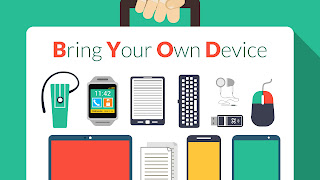Twitter Feed
NCOIC Discusses e-Discovery and Cloud Computing
Last week during its weekly meeting, the NCOIC Cloud Computing Working Group (CCWG) examined some of the legal aspects surrounding electronically stored information. With government use of cloud computing expected…
Take the survey, get a book!
“Cloud Musings”, in cooperation with Aditya Yadav & Associates, is conducting a new cloud computing survey. This short, eight (8) question poll, is designed to gauge general corporate plans around…
Army Knowledge Leaders Study Cloud Computing
This week it was my pleasure to explore cloud computing with Army Knowledge Leaders (AKL) ! AKL is an intensive 2 year experience of training and work rotations designed to develop leadership,…
Northrop Grumman & Lockheed Martin Selected for CANES
Last week the US Navy awarded initial CANES contracts to Northrop Grumman and Lockheed Martin. Navy officials place the contract values at $775M for Northrop and $937M for Lockheed.…
NCOIC Analyses Cloud Computing With SCOPE
Last week, the Network Centric Operations Consortium (NCOIC) Cloud Computing Working Group (CCWG) started it’s work on cloud interoperability in earnest. The first step in their process is the completion…
TASER Awarded: The NGA ASP/ISP Transition Contract
The National Geospatial-Intelligence Agency (NGA) has awarded the Total Application Services for Enterprise Requirements (TASER) contract to: Accenture National Security Services, LLC BAE Systems Information Technology, Inc. The Boeing Company-Autometric,…
EuroCloud Expands Quickly
Last October I introduced EuroCloud as a pan-European business network with the goal of promoting European use of cloud computing. In the intervening three months, the organization has grown to…
Joining NJVC: A Professional Plateau
This week I begin a new and exciting phase of my professional career by joining the NJVC Enterprise Management Team! For those unfamiliar, NJVC is one of the largest information…
DoD Deputy CIO on Secure Information Sharing
Today on Federal Executive Forum, Dave Wennergren, Deputy CIO, Office of the Secretary of Defense, shared his views on secure information sharing. Mr. David M. Wennergren serves as the Deputy…
Training Conference: Cloud Computing for DoD & Government
Please join me at the Cloud Computing for DoD & Government training conference, February 22-24, 2010 at the Hilton Old Town in Alexandria, VA. This unique conference agenda blends interactive…
- Increased employee mobility (63%), satisfaction (56%) and productivity (55%) dominate as the top drivers of BYOD. These employee related drivers are considered more important than reduced costs (47%).
- Security (39%) and employee privacy (12%) are the biggest inhibitors of BYOD adoption.
- 20% of surveyed organizations have suffered a mobile security breach, primarily driven by malware and malicious WiFi.
- Security threats to BYOD impose heavy burdens on organizations’ IT resources (35%) and help desk workloads (27%).
- Despite increasing mobile security threats, data breaches and new regulations, only 30% of organizations are increasing security budgets for BYOD in the next 12 months and 37% have no plans to change their security budgets.
- 72% – Data leakage/loss
- 56% – Unauthorized access to company data and systems
- 54% – Downloading of unsafe apps or content
- 52% – Malware
- 50% – Lost or stolen devices
- 49% – Vulnerability exploitation
- 48% – Lack of control on endpoint security
- 39% – Infrequent software updates
- 38% – Compliance
1. Create your policy before procuring technology: To effectively use mobile device management (MDM) technology for employee owned devices Policy must precede technology. Also note that these policies will have broad corporate-wide implications for IT, HR, legal, and security.
- Mobile device management
- Application security assessments
- Application testing services
- Application source code security assessments; and
- Embedded device security.
This post was brought to you by IBM Global Technology Services. For more content like this, visit ITBizAdvisor.com.
( Thank you. If you enjoyed this article, get free updates by email or RSS – © Copyright Kevin L. Jackson 2017)
Cloud Computing
- CPUcoin Expands CPU/GPU Power Sharing with Cudo Ventures Enterprise Network Partnership
- CPUcoin Expands CPU/GPU Power Sharing with Cudo Ventures Enterprise Network Partnership
- Route1 Announces Q2 2019 Financial Results
- CPUcoin Expands CPU/GPU Power Sharing with Cudo Ventures Enterprise Network Partnership
- ChannelAdvisor to Present at the D.A. Davidson 18th Annual Technology Conference
Cybersecurity
- Route1 Announces Q2 2019 Financial Results
- FIRST US BANCSHARES, INC. DECLARES CASH DIVIDEND
- Business Continuity Management Planning Solution Market is Expected to Grow ~ US$ 1.6 Bn by the end of 2029 - PMR
- Atos delivers Quantum-Learning-as-a-Service to Xofia to enable artificial intelligence solutions
- New Ares IoT Botnet discovered on Android OS based Set-Top Boxes


